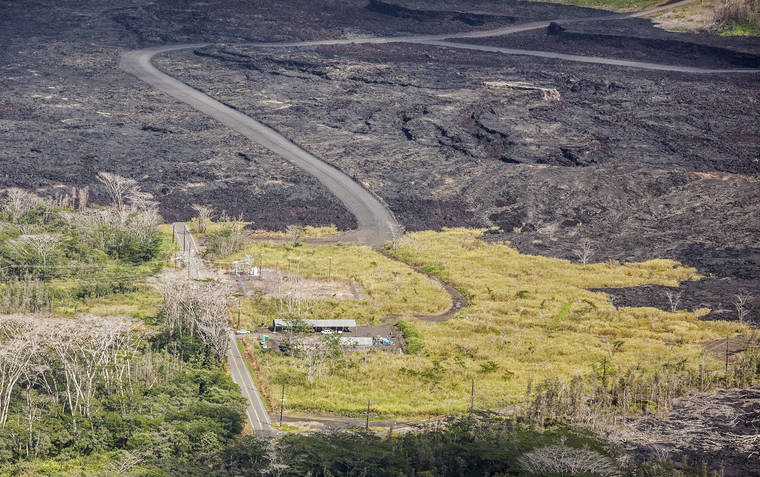Mayor Harry Kim delivered some reassuring news to lower Puna residents who gathered Friday evening to advocate for restoration of their lava-ravaged communities.
He said a request for proposals has been issued for construction of a temporary road over inundated areas of Highway 132, and later told a reporter he expects construction to begin in June.
The county is under a deadline of Oct. 5 to complete the work for it to be completely reimbursed by the Federal Highway Administration. Kim said the contractor will work on both ends at once to ensure the deadline is met. About 3 miles of the road is covered.
“I know the impatience,” he said, when addressing criticisms regarding the pace of road restoration. Kim said decisions have been made in the best interest of the community.
“I ask you to trust that even if you disagree with a decision we made, we made it on that basis,” he said.
Restoration was on the minds of all of the approximately 100 people present at the Pahoa High School cafeteria. The event was organized by I Mua Lower Puna, a coalition of neighborhood groups in the affected area.
Since April, residents of isolated kipuka along Highway 132 have used a temporary access road through the Puna Geothermal Venture site to access their properties.
“We love it here and we worked hard for everything we have,” said Felicia Frazer-Harms, whose family has a home in the kipuka.
“We need our county roads and power restored,” she added.
Several homes remain isolated in other kipuka off Pohoiki Road and in Leilani Estates.
After the temporary road on Highway 132 is done, Kim pledged to restore access through Pohoiki Road and build a temporary road to the former lower Kapoho subdivisions that were wiped out. Property owners there are seeking federal grants and loans to restore their private communities, but need road access from the county to secure those funds.
Kim said the county would have to pay for that expense, which he estimated at $250,000.
The eruption, which began May 3, 2018, destroyed 716 permitted structures, many of them in lower Kapoho, where Kim also owned a home, and displaced 3,000 people, according to the county.
“We have a blank slate,” said Debra Smith, president of the Kapoho Vacationland board, at the meeting. “We need hope we can rebuild.”
How the area is redeveloped and to what extent are the focus of recovery plans the county is pursuing.
Kim left a message of caution regarding the volcanic threat, which still remains even if Kilauea is quiet for now.
“So there’s a lot of emptiness that you are experiencing that others have, unfortunately,” he said.
“And it is my responsibility to tell you that … all of that area is under threat. It will continue to be under threat 1,000 years after you and I are gone.”
Email Tom Callis at tcallis@hawaiitribune-herald.com.






